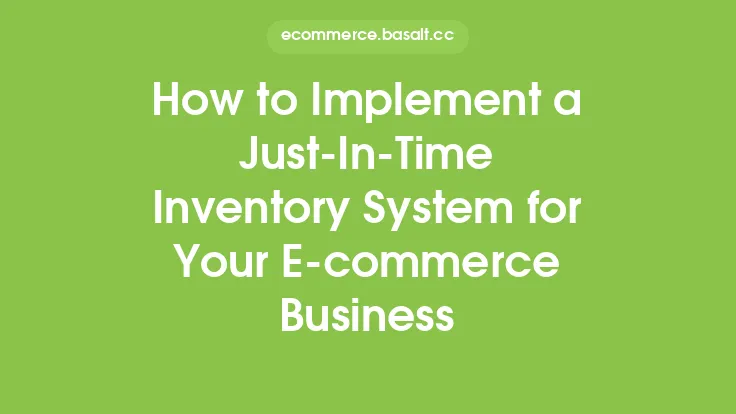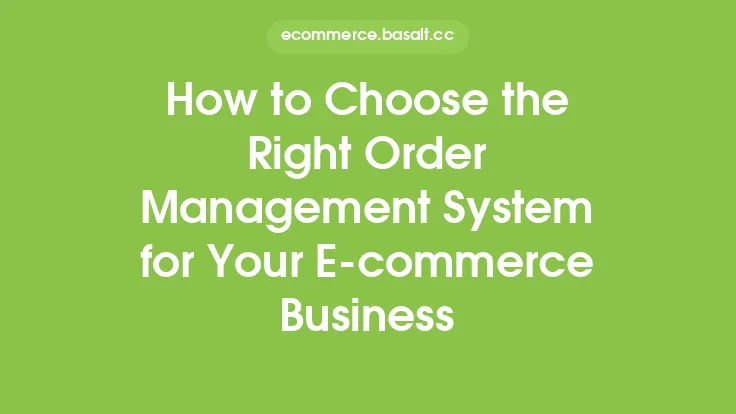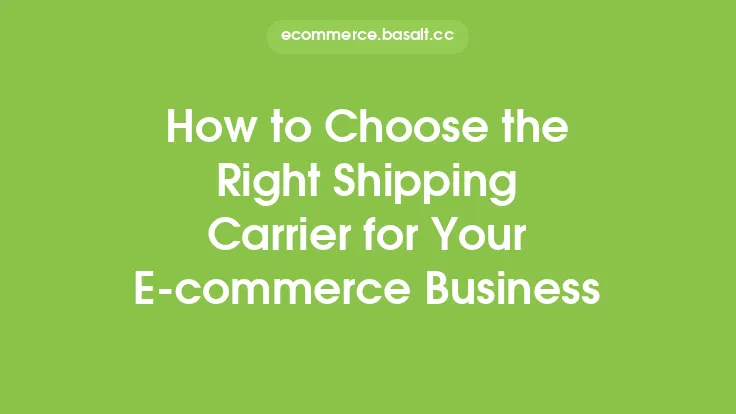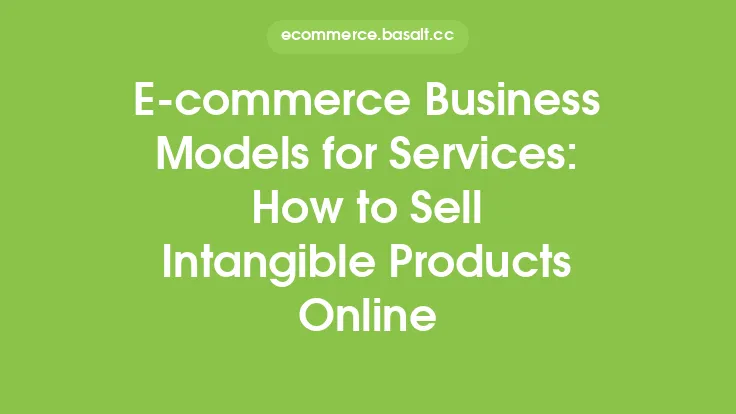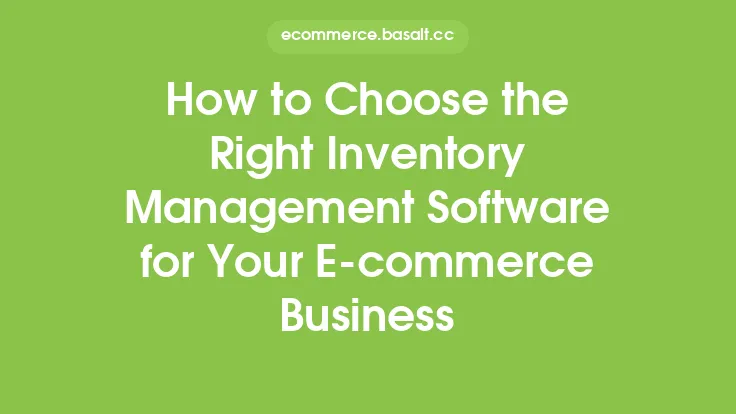In today's digital age, e-commerce marketplaces have become an essential platform for businesses to reach a wider audience and increase their online presence. These marketplaces provide a convenient and accessible way for customers to browse and purchase products from various sellers, making them an attractive option for businesses looking to expand their customer base. With the rise of e-commerce, marketplaces have evolved to cater to different types of businesses, products, and services, offering a range of benefits and opportunities for growth.
What are E-commerce Marketplaces?
E-commerce marketplaces are online platforms that connect buyers and sellers, enabling them to conduct transactions in a secure and efficient manner. These marketplaces can be categorized into different types, including business-to-business (B2B), business-to-consumer (B2C), and consumer-to-consumer (C2C) marketplaces. Each type of marketplace has its unique features, advantages, and target audience, allowing businesses to choose the one that best suits their needs and goals. Some popular examples of e-commerce marketplaces include Amazon, eBay, and Etsy, which have become household names and have revolutionized the way people shop online.
Benefits of Using E-commerce Marketplaces
Using e-commerce marketplaces can offer numerous benefits to businesses, including increased visibility, accessibility, and credibility. By listing their products on a reputable marketplace, businesses can reach a large and targeted audience, increasing their chances of making sales and generating revenue. Additionally, marketplaces often provide a range of tools and services, such as payment processing, shipping, and customer support, which can help businesses streamline their operations and improve their overall customer experience. Furthermore, marketplaces can provide valuable insights and analytics, enabling businesses to track their performance, identify areas for improvement, and make data-driven decisions to optimize their strategies.
How to Choose the Right E-commerce Marketplace
With so many e-commerce marketplaces available, choosing the right one can be a daunting task. Businesses should consider several factors, including the type of products they sell, their target audience, and their marketing goals. They should also research the marketplace's fees, commission rates, and payment terms to ensure they are competitive and aligned with their business model. Additionally, businesses should evaluate the marketplace's reputation, security, and customer support to ensure they provide a safe and reliable environment for buyers and sellers. By carefully considering these factors, businesses can select the most suitable marketplace for their needs and maximize their chances of success.
Optimizing Product Listings for E-commerce Marketplaces
To succeed on e-commerce marketplaces, businesses need to optimize their product listings to attract and engage potential customers. This involves creating high-quality product descriptions, images, and videos that showcase the product's features, benefits, and unique selling points. Businesses should also use relevant keywords, categories, and tags to improve their product's visibility in search results and make it easier for customers to find. Additionally, businesses should ensure their product listings are accurate, up-to-date, and compliant with the marketplace's policies and guidelines. By optimizing their product listings, businesses can increase their chances of making sales, improving their customer satisfaction, and building a strong reputation on the marketplace.
Managing Inventory and Fulfillment on E-commerce Marketplaces
Effective inventory management and fulfillment are critical components of success on e-commerce marketplaces. Businesses need to ensure they have a reliable and efficient system in place to manage their inventory, track their stock levels, and fulfill orders promptly. This involves integrating their inventory management system with the marketplace's platform, using tools such as inventory management software and automated fulfillment services. Businesses should also consider using fulfillment by marketplace (FBM) or fulfillment by merchant (FBM) options, which can help them streamline their logistics and improve their delivery times. By managing their inventory and fulfillment effectively, businesses can reduce errors, improve customer satisfaction, and increase their overall efficiency.
Marketing and Promoting Products on E-commerce Marketplaces
To drive sales and revenue on e-commerce marketplaces, businesses need to develop effective marketing and promotion strategies. This involves using a range of tactics, such as search engine optimization (SEO), pay-per-click (PPC) advertising, social media marketing, and email marketing. Businesses should also leverage the marketplace's promotional tools and services, such as sponsored products, deals, and coupons, to increase their product's visibility and appeal. Additionally, businesses should engage with their customers, respond to reviews and feedback, and use customer insights to improve their products and services. By marketing and promoting their products effectively, businesses can increase their brand awareness, drive traffic to their listings, and boost their sales and revenue.
Measuring Success on E-commerce Marketplaces
To measure their success on e-commerce marketplaces, businesses need to track and analyze their performance using key metrics and indicators. This involves monitoring their sales, revenue, and profit margins, as well as their customer satisfaction, retention, and acquisition rates. Businesses should also use analytics tools to track their website traffic, conversion rates, and average order value, and to identify areas for improvement. By measuring their success and adjusting their strategies accordingly, businesses can optimize their performance, improve their competitiveness, and achieve their goals on e-commerce marketplaces.
Best Practices for Selling on E-commerce Marketplaces
To succeed on e-commerce marketplaces, businesses should follow best practices that ensure they provide a high-quality customer experience, comply with marketplace policies, and optimize their operations for efficiency and scalability. This involves providing accurate and detailed product information, responding promptly to customer inquiries and feedback, and resolving any issues or disputes in a fair and timely manner. Businesses should also ensure they comply with all relevant laws, regulations, and industry standards, and that they maintain a high level of security and data protection. By following these best practices, businesses can build trust with their customers, establish a strong reputation on the marketplace, and achieve long-term success and growth.
Future of E-commerce Marketplaces
The future of e-commerce marketplaces looks promising, with ongoing advancements in technology, changing consumer behaviors, and emerging trends and innovations. As marketplaces continue to evolve and expand, businesses will need to adapt and innovate to remain competitive and relevant. This involves embracing new technologies, such as artificial intelligence, blockchain, and the Internet of Things (IoT), and using data analytics and insights to inform their strategies and decision-making. By staying ahead of the curve and leveraging the latest trends and innovations, businesses can capitalize on new opportunities, drive growth and revenue, and succeed in an increasingly complex and competitive e-commerce landscape.
